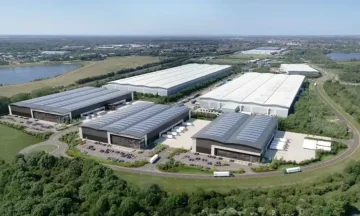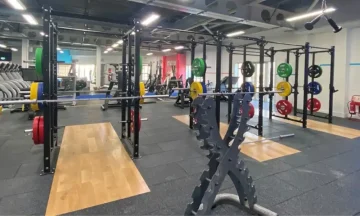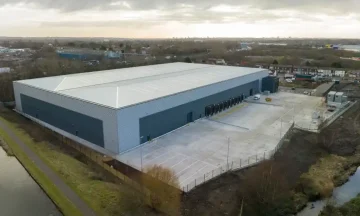How often have we heard stories of construction projects going over budget?
It happens far too often and leads to serious problems for developers, contractors, and clients alike.
Cost certainty in construction is not just about keeping costs down; it is about protecting your investment, avoiding unexpected setbacks, and building with real confidence.
The Construction Consultants (TCC) work closely with you to make sure every cost is planned, managed, and controlled from the beginning.
Strong cost consultancy is essential to preventing budget overruns, and our team puts dispute resolution and risk mitigation at the centre of every project.
Taking a proactive approach and staying involved at every stage, we help you deliver your project smoothly and without financial surprises.
What is cost certainty in construction?

Cost means having a strong level of confidence that the final cost of a construction project will match the original budget. It is about reducing the financial risks that can easily appear once building work begins.
When you have cost certainty, you are not just reacting to problems after they arise.
You have a much clearer picture early on, which helps you make smarter decisions, manage risks, and plan your finances more accurately.
Research from the Royal Institution of Chartered Surveyors (RICS) shows that early-stage cost planning and ongoing cost management are some of the most effective ways to control construction budgets.
Projects with structured cost consultancy in place are far more likely to finish on time and within budget compared to those without.
The Construction Consultants (TCC) make cost certainty a priority in every project we handle.
From the very first sketches through to the final handover, our quantity surveyors and project managers work closely with you to make sure you have a full understanding of the costs involved at every step.
We do not believe in rough estimates or vague forecasts.
Our team relies on real data, detailed market knowledge, and a practical approach to cost management that is rooted in experience. When you work with us, you get clear advice, honest updates, and a much stronger grip on your project’s financial health.
Why do construction projects go over budget?
Construction projects can run over budget for many reasons, and sometimes it only takes one small issue early on to cause bigger problems later.
Some of the most common causes include:
- Poor initial planning
Without a strong and realistic plan from the start, projects are left vulnerable to unexpected costs.
Rushed planning often overlooks key risks and opportunities, which can cause budgets to spiral once work begins. - Unexpected site conditions
Even with thorough surveys, hidden problems such as contaminated ground, unstable soil, or buried infrastructure can emerge during construction.
These surprises often require additional work and extra cost to put right. - Scope creep
Scope creep happens when the size or ambition of the project grows after the budget has already been set.
If these changes are not carefully managed and costed, the final bill can look very different from the original forecast. - Inaccurate estimates
If early cost estimates are too optimistic or based on outdated information, there is a real risk that the budget will not be enough to deliver the full project.
The Construction Industry Institute (CII) found that projects with poor initial estimates were 20 to 30 percent more likely to experience significant cost overruns. - Supply chain issues
Problems in the supply chain, such as shortages of materials, delivery delays, or price increases, can have a major impact on construction costs. This has become even more common in recent years, with global supply chain pressures affecting projects across the UK. - Poor communication between teams
When designers, contractors, and clients do not communicate well, mistakes and misunderstandings happen.
These errors often lead to rework, delays, and extra costs that could have been avoided with clearer coordination.
How can a cost consultant prevent budget overruns?
An effective cost consultant plays several key roles:
- Accurate Cost Planning
From the start, we provide clear, evidence-based cost estimates. This helps you set realistic budgets. - Risk Management
We identify risks early and suggest ways to avoid or reduce them. Risk mitigation isn’t just a buzzword, it’s an everyday part of our work. - Change Control
Changes are part of construction, but we make sure every change is properly costed and approved before moving ahead. - Value Engineering
We look for smart ways to save money without reducing quality. This can include alternative materials, methods, or suppliers. We access with in our sister company The Materials Consultants (TMC) we have live data available immediately. - Procurement Advice
We help you choose the right contractors and suppliers, ensuring good value and reliable delivery.
What role does risk mitigation play in construction projects?

Risk mitigation in construction means spotting potential problems before they happen and putting plans in place to deal with them.
In UK’s busy construction industry, unexpected challenges can crop up, bad weather, supply shortages, planning delays, you name it.
We work with you to prepare for these risks:
- Early Risk Workshops
We bring all the project stakeholders together to talk about possible risks and plan for them. - Contingency Planning
We help you set aside sensible contingencies, so you’re not caught short when surprises arise. - Ongoing Risk Monitoring
We regularly update risk assessments and advise you on the best action to take.
3 Ways to Prevent Disputes in Construction Projects
Disputes in construction can be expensive and time-consuming, but with the right approach, many of them can be avoided. Here are three key ways to help keep your project on track:
1. Use Clear Contracts
Clear and well-written contracts set the groundwork for a successful project. A good contract spells out responsibilities, deadlines, payment terms, and processes for handling changes.
When everyone knows exactly what is expected, there is far less room for misunderstanding.
Research from the Chartered Institute of Building (CIOB) shows that unclear contracts are one of the main causes of disputes in construction.
2. Communicate Regularly and Honestly
Good communication is vital to avoiding problems later. Regular updates and honest conversations mean that small issues can be dealt with quickly, rather than turning into larger disputes.
Simple things like sharing site updates, flagging risks early, and holding regular meetings can make a huge difference.
The Construction Consultants (TCC) believes in staying connected with you and all project partners, helping to build strong relationships and deal with challenges before they escalate.
3. Keep Detailed and Accurate Records
When changes happen during a project, having a detailed record of instructions, agreements, and decisions makes it much easier to handle disputes fairly.
Good record keeping gives you the evidence needed if any disagreements arise.
According to the Construction Industry Council (CIC), maintaining clear project records is often the difference between quickly resolving a dispute and facing a lengthy battle.
Our team makes sure every important detail is documented carefully, giving you extra security throughout the project.
How does effective cost consultancy support project success?
When cost consultancy is done properly, you get more than just a number on a spreadsheet. You get a better, smoother, more predictable project. Here’s how we help you:
- Better Decision-Making
When you have reliable cost advice, you can make smarter choices about design, materials, and scheduling. - More Control
Regular cost reporting means you always know where you stand financially. - Reduced Stress
Knowing that your project is in safe hands gives you peace of mind.
What strategies help maintain cost certainty throughout a project?
Maintaining cost certainty isn’t just about the initial estimate, it’s about keeping things under control right to the end.
At The Construction Consultants (TCC), we use several strategies:
- Regular Cost Reports
We provide clear, easy-to-read reports showing the current financial status of your project. - Early Warning Notices
If something changes, you find out straight away. - Change Management Systems
We track every change, big or small, and make sure you understand the cost impact. - Final Account Agreement
We push for early finalisation of accounts to avoid late-stage disputes.
Why choose The Construction Consultants (TCC) for cost consultancy?
Choosing the right cost consultant can make all the difference to the success of your project.
We are not just another consultancy firm working in the background.
TCC become an active part of your project team, genuinely committed to helping you achieve your goals.
Our approach is built around partnership, trust, and practical advice that makes a real difference from the first meeting to the final account.
We have in house contractors Quantity Surveyors to a sister company who specialise in material procurement (The Materials Consultancy – TMC) so have a full vertical understanding of your project.
Here is what makes us stand out:
Hands On Support
We stay fully involved from start to finish, not just appearing at set milestones.
Being actively engaged throughout the project allows us to spot risks early, manage costs properly, and give you timely advice when you need it most.
A study from the Royal Institution of Chartered Surveyors (RICS) highlights that continuous cost consultancy involvement significantly improves cost certainty and project outcomes. That is why we do not step back once the budget is set.
We stay with you, helping to manage every stage with care and focus.
Clear Communication
No jargon, no hidden surprises, just straightforward and honest advice you can rely on.
Construction projects are complicated enough without consultants using confusing language or vague forecasts.
We believe you should always know exactly where your project stands financially.
Regular updates and clear reporting mean you are never left guessing.
Local Knowledge
Our team has deep roots in the UK and understands the unique challenges and opportunities of working here.
Even if it is local labour availability, planning regulations, or material supply, we use our local knowledge to help manage risks and spot opportunities early.
Having this understanding is vital, especially when studies have shown that regional market factors are one of the top reasons for project cost variance across the UK.
Personalised Service
Every project is different, and so is every client.
We take the time to understand what matters most to you and tailor our advice to suit your needs. We do not believe in one-size-fits-all approaches.
If you are developing a commercial site, managing a residential build, or delivering public infrastructure, our team adjusts our strategies to fit your budget, timeline, and ambitions.
Your project gets the individual attention it deserves, and you get advice that is actually useful, not just copied from a textbook.
Choosing The Construction Consultants (TCC) means you get a team that is with you every step of the way, genuinely invested in making your project a success.
When you work with us, you are not just hiring a service.
You are building a partnership that is focused on delivering value, reducing risk, and achieving real results.
How do we help you achieve cost certainty?
Here’s what we focus on at every stage:
- Before Construction
Early cost planning, risk workshops, procurement advice. - During Construction
Monthly reporting, change control, dispute avoidance. - At Project Close
Final account agreement, lessons learned, risk review.
Keeping Your Construction Budget Under Control
The Construction Consultants (TCC) know that cost certainty in construction is not just a technical goal; it is something that protects your project, your finances, and your peace of mind.
Every decision we make is focused on giving you full control over your construction costs, so you can avoid the stress of budget overruns and unexpected disputes.
Our team works with you closely from the start, offering clear communication, strong risk management, and honest, practical advice.
We tailor everything we do to fit the realities of the UK market, where local knowledge and proactive planning make a real difference.
You will always have up to date, reliable information at your fingertips, helping you make smart decisions when they matter most.
TCC believes that dispute resolution and risk mitigation are not just about fixing problems after they happen.
They are about setting up your project properly from the beginning, building a foundation of confidence and certainty that lasts right through to completion.
Choosing The Construction Consultants (TCC) means you are choosing a team that does more than just manage costs.
You get a genuine partner who stands beside you at every stage of the journey.
If you are looking for expert cost consultancy that makes a real difference, we are ready to help make your next project a success.






































